


EXPANDED BODY, IDENTICAL IDENTITY
DESIRE AND SEX IN THE SKIN FILM OF PHOTOGRAPHY
“If subversion is possible, it will be a subversion from within the terms of the law, through the possibilities that arise when it turns against itself and generates unexpected metamorphoses. The culturally constructed body will then be freed, not for its natural past, nor for its original pleasures, but for an open future of cultural possibilities.”
Judith Butler*
In the 1990s, a magazine emerged in Brazil that became one of the most important in the country for photography: Paparazzi Photo Art. During its eight years of existence and its 23 printed editions (the first published in September 1995 and the last in 2003), it has been a reference in Brazil. Since then, it has existed virtually: there are now 38 virtual editions, with a few printed in small runs, released quarterly. It was created by Carlo Cirenza, a Brazilian who has been active in both photography and the editorial and curatorial fields – both Brazilian and international – since 1974. He was the curator of Paparazzi Galeria, located on Avenida Pedroso de Moraes (near Rebouças), in Pinheiros, São Paulo, from 1997 to 2006. A gallery literally on the street, which at the time meant a lot to the city, moving photography from the “white cube” of galleries to the perpetual bustle of a public thoroughfare, transforming the passageway, for seconds or minutes, into a landscape. In a photographic image.
Cirenza has published works by major photographers such as Alair Gomes, Angelo Pastorello, Antonio Guerreiro, Athos Bulcão, Bubby Costa, Cassio Vasconcellos, Cesar Oiticica Filho, Claudio Feijó, Eduardo Muylaert, Grete Stern, Jacques Faing, José Oiticica Filho, Klaus Miltteldorf, Luiz Garrido, Marcelo Pallotta, Mario Cravo Neto, Miro, Otto Stupakoff, Rafic Farah and Vanessa Beecroft, among other prominent names in Brazilian and international photography. We are
contemporaries, born in the same decade (he in 1960 and I in 1969), and I had the honor, at the age of 29, in 1998, to be invited by him to feature an eight-page photo essay in issue number 16 of the magazine. It was the April/May issue of that year, which featured a cover photo by Arthur Omar (from his series “Pânico Sutil”/ “Subtle Panic”), and I presented part of the series of polaroids “Confabulário do Corpo” (“Body Confabulary”). More than 25 years later, I am invited by Cirenza to curate edition 39 with an LGBTQIAPN+ theme, showcasing works by 13 invited artists to present a selection of their photographic production. It is important to provide historical context that the acronym GLS emerged in the 1980s to identify the movement of gays, lesbians and allies. However, it was exactly 30 years ago, in 1994, when my friend, the journalist, activist and entrepreneur Suzy Capó, used it in the preparations for the Mix Brasil Festival (which she created with also friend André Fischer), that the acronym became popular. Since then, the term has evolved over the years to LGBTQIA+ (representing Lesbians, Gays, Bisexuals, Transgender, Queer, Intersex, Asexual and other identities). It has now further expanded to LGBTQIAPN+, also including Pansexual and Non-binary identities. Each letter of the acronym (initials that can be read as a word) recognizes the diversity of sexualities and gender identities, each with its own characteristics and specificities. This issue wants to present/show different bodies, gender identities and sexualities. And, above all else, to visually speak about representations of desire on the skin that is the photographic film and in all its complexity and politics. And here I emphasize, regarding “politics,” which is related to common life, which was created to [de]regulate social disputes. It is worth mentioning that Socrates said that a public man is one who deals with the “public thing.” For him, as for Aristotle and Plato, “politics and its
institutions have a formative-educational function, in the sense that they determine justice or injustice in society”. This is a more than pertinent edition in times when we live (or survive) in a country that has the highest number of murders of trans people for the 15th consecutive year. And, in its own way, it also seeks to reflect on the historical construction of bodies, subjects, sexuality and, specially, subjectivities that have materialized aesthetically and politically in their creations and representations.
This issue also features mostly creators from the states of Sao Paulo, Rio de Janeiro and one from Bahia. I hope that in a future issue – which will update the same theme –the curatorial scope can be expanded to include artists from all over Brazil. Recently, for the first time in its history, IBGE (Brazilian Institute of Geography and Statistics) conducted a demographic survey mapping the sexuality of Brazilians, although with some shortcomings. The questionnaire only included the options “gay”, “bisexual” and “lesbian”. In terms of regions, the highest percentage is from the Southeast. It is worth noting that the three most populous Brazilian states – Sao Paulo, Minas Gerais and Rio de Janeiro – account for nearly 40% of the Brazilian population.
In this issue there are works by 13 Brazilian artists: Aun Helden (SP), Bella Tozini (SP), Beto Pêgo/Betina Polaroid (RJ), Claudia Ferreira (RJ), Claudia Guimarães (SP), Edgard de Souza (SP), Fernanda Piccolo (RJ), Francisco Hurtz (SP), Iatã Canabrava (SP), Íra Barillo (RJ), José Marçal (BA), Pamela Facco (SP) and Victor Curi (RJ). And here, more than ever, the phrase “a picture is worth a thousand words” fits perfectly. I recall the classic “Camera Lucida” by Roland Barthes, a book in which he discusses two elements, two words that are essential in photography for him: studium and punctum. The former is like a feeling that, at times, provides emotion, but is always bordered by the “judicious exchange of a moral and political culture”. “Recognizing the studium is inevitably finding
the photographer’s intentions”; which allows for the reading of their myths, which aim evidently to “reconcile Photography and society.” The latter, for him, in a photograph, is “what, in it, pricks (but also mortifies, wounds) me”. Something of the order of manifestation, like an arrow that penetrates us, passes through us.
May these photographs presented here possess more punctum, may they pass through us and also any moral or political judgments of these dissident, disruptive and expanded bodies in the skin that is the photographic film.
Jurandy Valença, August 2024.
*Epigraph from the book “Corpos, Gêneros e Sexualidades nas Ciências Humanas e Sociais” (“Bodies, Genders and Sexualities in the Human and Social Sciences”), organized by Sirlene Mota Pinheiro da Silva and Jónata Ferreira de Moura, both professors at Universidade Federal do Maranhão.

Aun explores the body and its possibilities – from the frightening and the strange to the futuristic. Her entire body is a possibility for the artist: “Language is a body, a possible episteme of transformations and resignifications of its symbols. Trauma, the grotesque, lichen, glamour, and failure are all profane sculptures of the world I create as a language that traverses reality.” A Brazilian artist who works with multiple mediums (such as performance, photography, prosthetic incorporation, video and sound), she took part in several exhibitions in Brazil and abroad, being a prominent name in the contemporary Brazilian art scene.











Project “Corpes Dissidentes” (“Dissident Bodies”), curated by Sylvia Furegatti, is an exhibition and urban intervention by the artist, featuring portraits of people from the LGBTQIAPN+ community with dissident bodies and expressions, captured in their most private, often vulnerable moments, occasionally in domestic spaces. The series highlights the power of these bodies, understanding them as political interfaces, whose lived experiences exist at the complex intersections of gender identity, age, race, body shape, sexuality and socioeconomic status. Bella holds a degree in Social Communication/Film from FAAP, a specialization from the Lódz Film School in Poland and a Master’s in Visual Arts from Unicamp.


Sara Donato, from the series CORPES Dissidentes (she/her), 2021

Ever Ferreira, from the series CORPES Dissidentes (she/her), 2024

Jupi77er, from the series CORPES Dissidentes (he/his), 2021


from the series CORPES Dissidentes (he/his), 2024

Rafael Brinco, from the series CORPES Dissidentes (he/his), 2021

Tayan, from the series CORPES Dissidentes (he/his), 2024

Paulo André, from the series CORPES Dissidentes (he/his), 2022

Giovanna, from the series CORPES Dissidentes (she/her), 2022
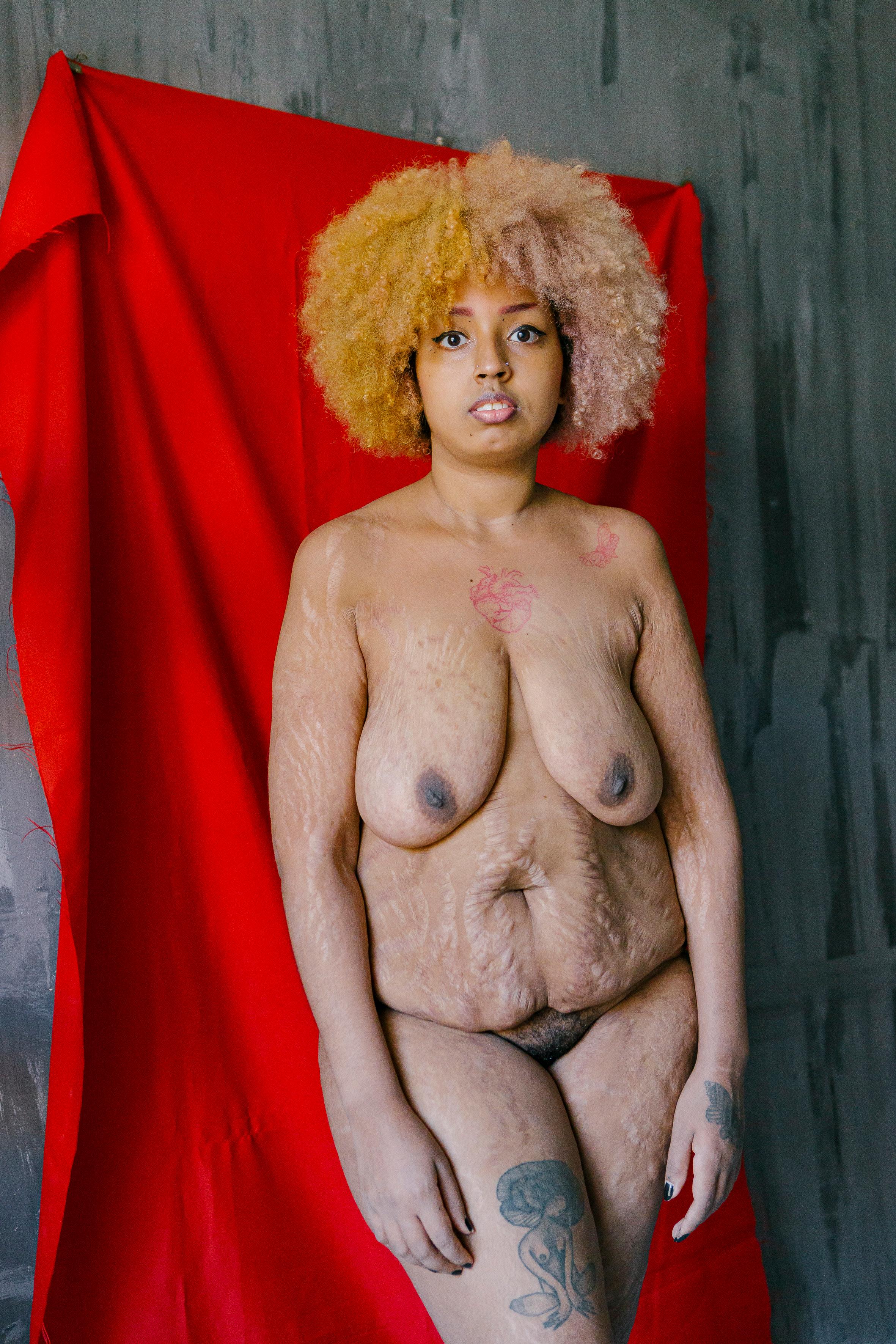
Toranja, from the series CORPES Dissidentes (she/her), 2021
Betina Polaroid is a visual artist known for blending drag art and photography into a unique performance. Through their hybrid analog-digital photography, photomontages, videos and performances, they began their journey as a queer artist in 2014, when commercial photographer Beto Pêgo became fascinated by the new generation of drag queens and drag kings performing at LGBTQIAPN+ parties in Rio de Janeiro. Beto studied Advertising at the Federal University of Rio de Janeiro, where they had their first contact with photography at the School of Visual Arts of Parque Lage. They work with documentary, editorial and commercial photography.





Marcha pela Cidadania (March for Citizenship) is considered the first LGBTQIAPN+ Pride Parade in Brazil, and it took place at the end of the 17th Conference of the International Lesbian and Gay Association (ILGA) in Rio de Janeiro on June 25, 1995. Claudia did the coverage for this and other parades in Rio de Janeiro, and their registers are available on the website Memória dos Movimentos Sociais, which also includes documentary photos of feminist movements captured since the late 1980s. The photographer worked for newspapers Jornal do Brasil, Folha de S.Paulo and Correio Braziliense and the agencies Sipa Press and Cone Sur Press.


March for Citizenship - Closing march of the 17th International Conference of Gays and Lesbians - ILGA, considered the 1st LGBT March in Brazil. Rio de Janeiro, Brazil; 06/25/1995









Claudia Guimarães’ photos are a portrait of what many wish to keep anonymous, breaking taboos and empowering/ strengthening all those captured through her lens. Each photo helps to eliminate prejudice and normalize bodies and gender expressions. “I try to rescue memories through photography.” Claudia began reaching a wider audience when her work was published in the daily newspaper Folha de S.Paulo during the 1990s, becoming since then one of the prominent names in Brazilian photography. She also works in the fashion and advertising industries.









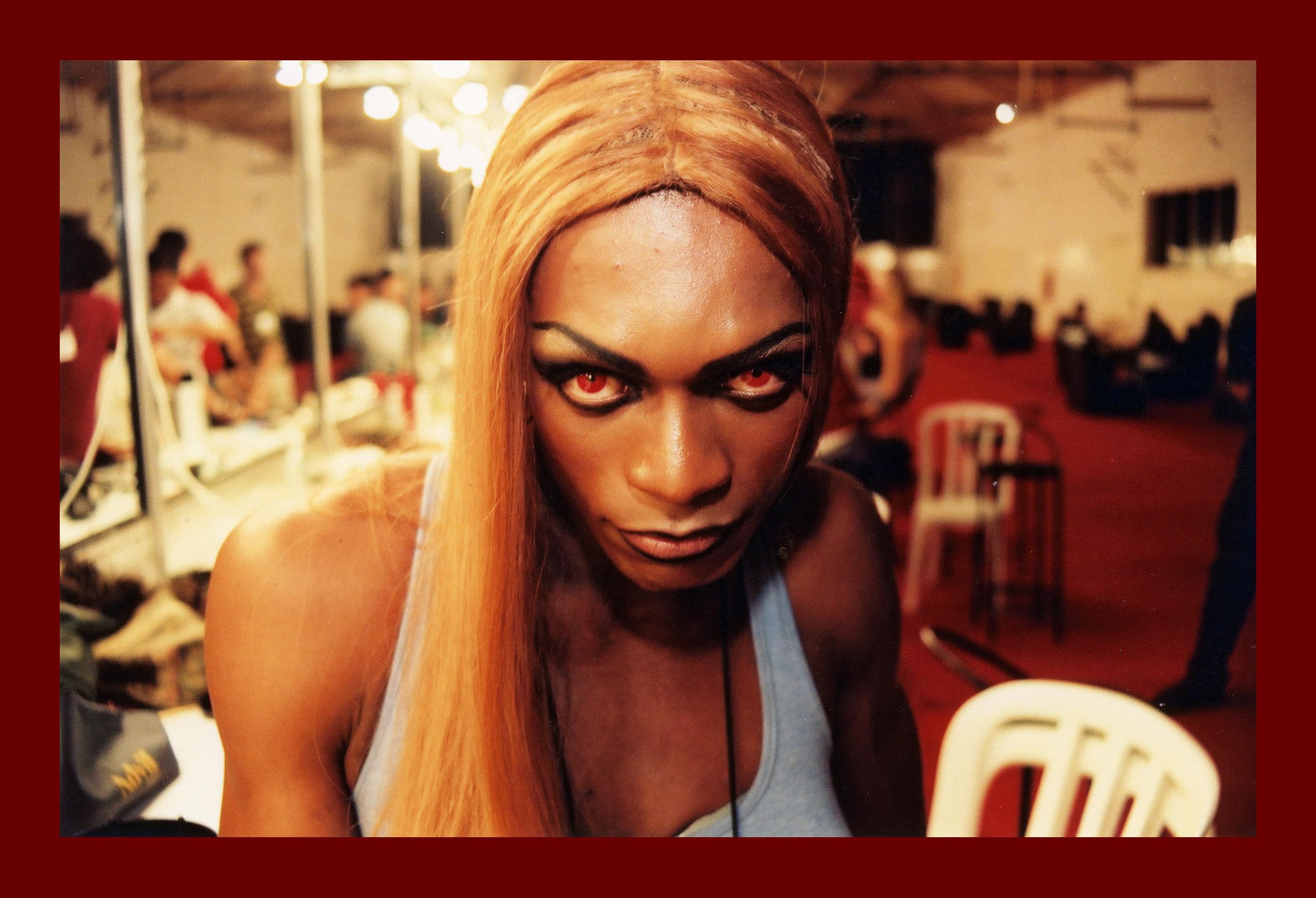







Edgard’s photographs play with the transmutation of bodies and the traditional idea of portraits, as is common in his work with human figures, addressing issues related to the body. The artist, represented by Vermelho gallery, published books and is one of the most important names in contemporary Brazilian art, with works in various institutions in Brazil. He studied fine arts at the Armando Álvares Penteado Foundation (FAAP) and works with painting, printmaking, photography and sculpture, a medium in which everyday objects – primarily the body – are transfigured into representations with new meanings and interpretations. Familiar, strange, and seductive.











The pioneering project “Documentadas” (“Documented”) is the first archive in Brazil dedicated to documenting love between women. Their stories are embraced through listening and photography. Conceived by Fernanda, it emerged in 2021 during the Covid-19 pandemic, through various studies and the realization that women are rarely documented throughout history, especially those who are romantically involved with other women. It is a platform that also creates jobs, income, connections and psychological support for the LGBTQIAPN+ population. Fernanda holds a degree in Photography and Visual Communication from the Universidade Luterana do Brasil.
Fernanda Piccolo - “Documentadas” (“Documented”)





















In the series “Retratos Fragmentados” (“Fragmented Portraits”), Francisco Hurtz seeks to study the anatomical and social shapes of men. “For centuries, the structure that defines gender has imposed a private existence on women, devoted to family in a kind of domestic imprisonment. Men were assigned the role of State agents. Men – public figures by imposition – are responsible for maintaining power through politics, capitalism and patriarchy.” He takes part in solo and group exhibitions both in Brazil and abroad, and his work is part of the art collection at the Fisher Library (the rare book library of the University of Toronto, Canada), among other institutions.







“with
their tail between their legs” (detail)



“almost summer”- 2021

“with their tail between their legs”-




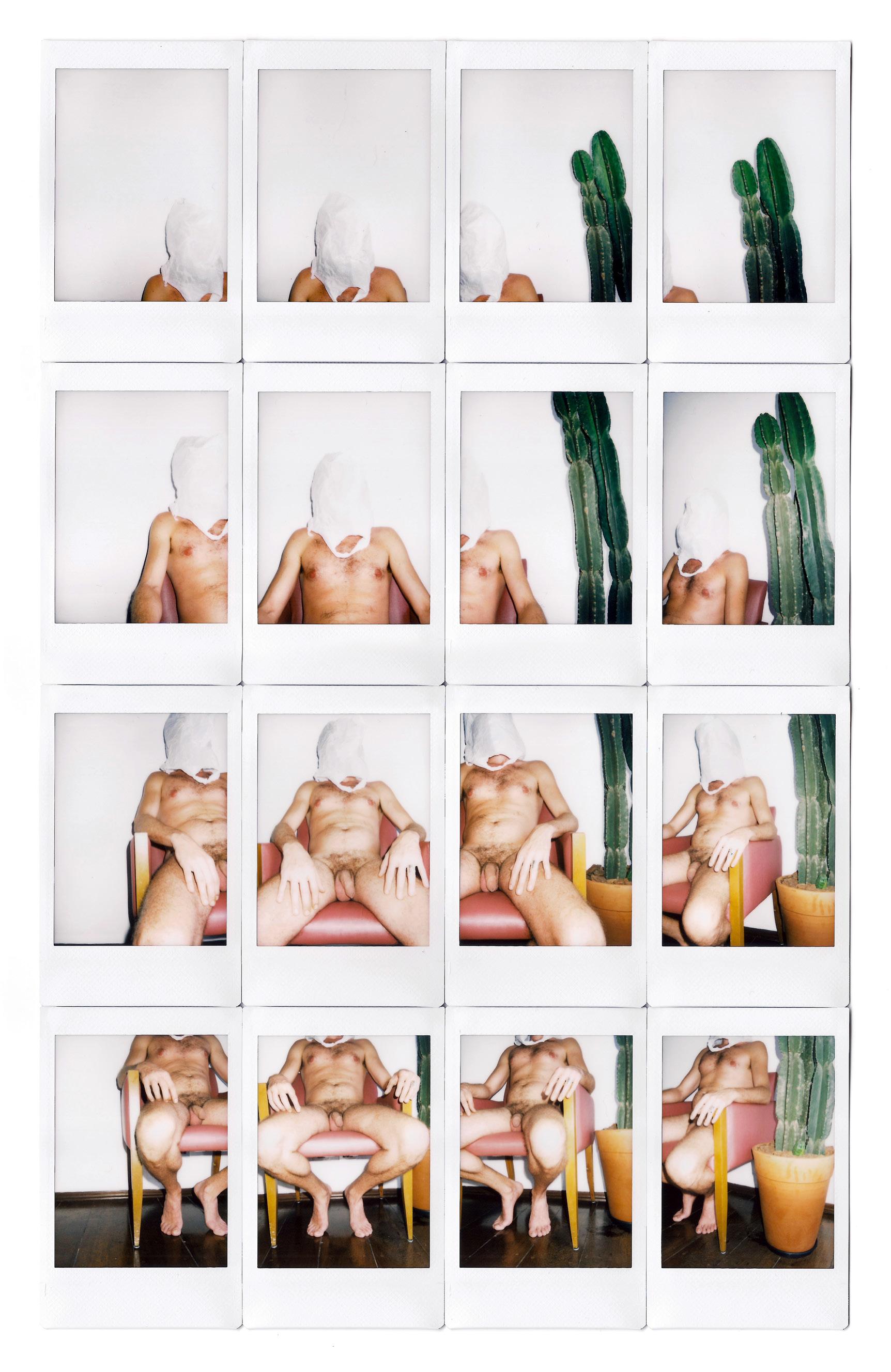
The portraits of participants from the São Paulo LGBT Pride Parade are part of the series “Notícias de Uma Parada Gay” (“News from a Gay Parade”), with photographs taken between 2003 and 2010. Altogether, the collection gathers 645 photos taken with specific studio photography equipment, a 1970s Hasselblad, and color negative film suited for portraits. According to the photographer, “street photography and its Bressonian decisive moment gave way to portraits, whenever the event date coincided with a clear sky or at least light that made the task possible – if not, I went back home to wait for the following year.” Iatã is also a curator, editor, cultural manager and producer.











The series “52 Disfarces para o Fim do Mundo” (“52 Disguises for the End of the World”) is a collaboration with drag queen Yan Chi, who poses for all the photos in different outfits and settings, creating images that depict fantastical situations. Each one explores a possibility of public existence in the world, the “disguises” we wear daily to exist in a social environment that values the conformity of bodies and genders. Íra is from the interior of Rio de Janeiro and works with photography and collages. They are a PhD candidate in Arts at UERJ, hold a Master’s degree in Performing Arts from UFRJ, a postgraduate degree in Education from PUC/RS and a technical degree in photography from the International Center of Photography in New York, United States.











The artist’s work consists of intimate portraits in which the model becomes a metaphor for the photographer’s inner world. Balancing the erotic and the oneiric, the images use the body as a space to discuss sexuality, hedonism and freedom. In the portraits, the models pose in the studio, interacting with objects, masks and fabrics, in images that flirt with surrealism. José worked as a photography lab technician at Agência Foto-in-Cena, and after several trips abroad, he moved to Berlin, Germany, in 2006. In 2012, he completed his studies at the Neue Schule für Fotografie Berlin.


















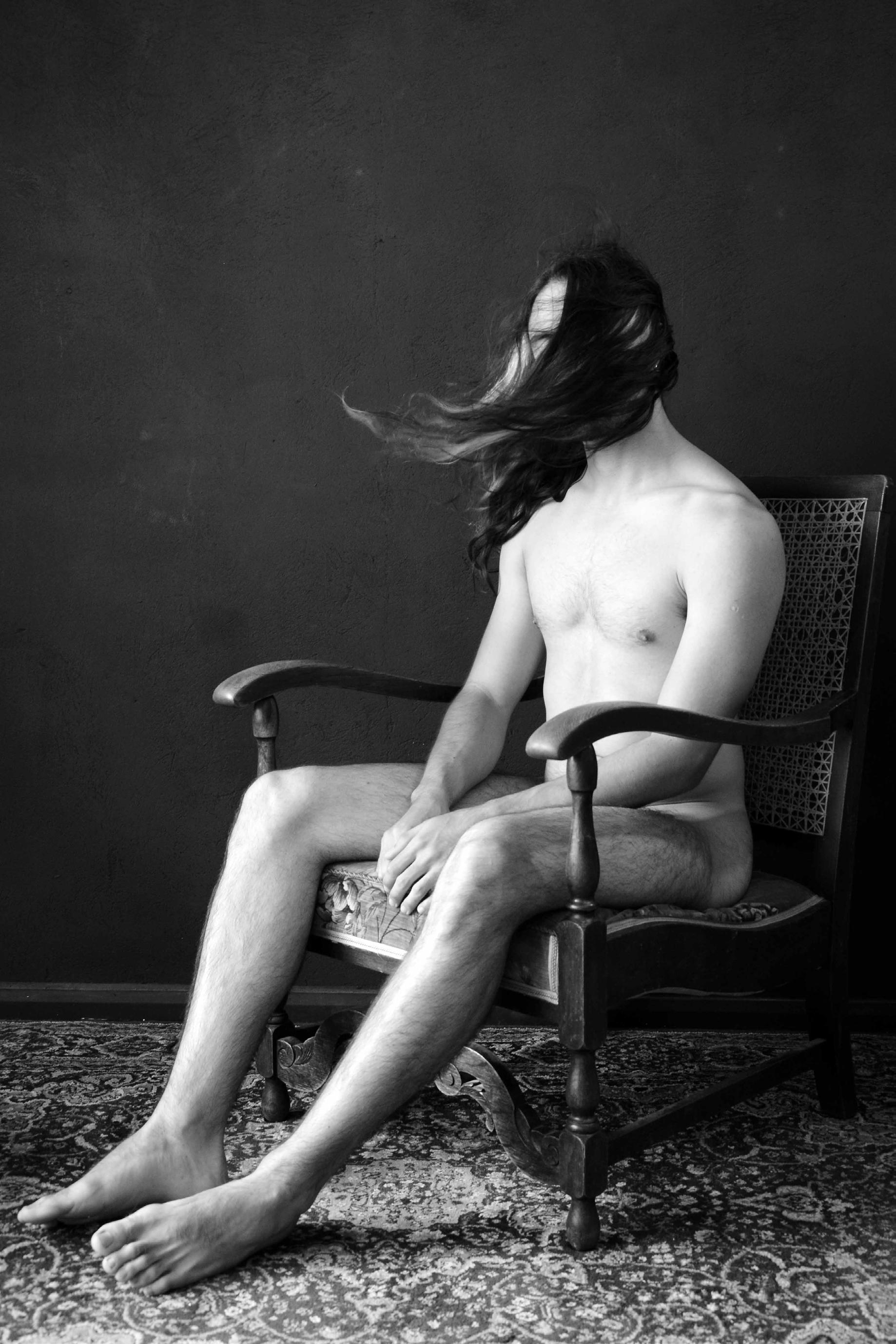


A photographic project conceived and developed by the artist Pamela Facco, 38 years old, from Sao Paulo. For her, the goal is to “remove the idea of nudity as an erotic place, breaking aesthetic standards. Every body is perfect.” Her poetic links aim to shift nudity away from the erotic and sexual character imposed on it by historical sexism. The photographer takes the prominence traditionally given to male artists in history and reverses this masculine worldview applied to the body. The project had its first session in 2016 and has been active since then. In addition to being a photographer, Pamela is a graphic designer by academic training and an illustrator.





















Victor Curi views the camera not as a tool for capturing images but as an instrument for collecting stories in collaboration with the person being photographed. In his photos, he plays with fantasy, creating an environment of complicity within the LGBTQIAPN+ community, a pact of shared fantasy. The photographer constantly seeks to challenge the traditional view of the camera, reminding that it is an empty space that is filled with light to generate/ create images. “I aim to collect, document and catalog these fantastic moments with the obsession of a naturalist but with the enchantment and fictionalization of an artist.” He has a background in biology and design and has been documenting LGBTQIAPN+ events in Rio de Janeiro for over eight years.












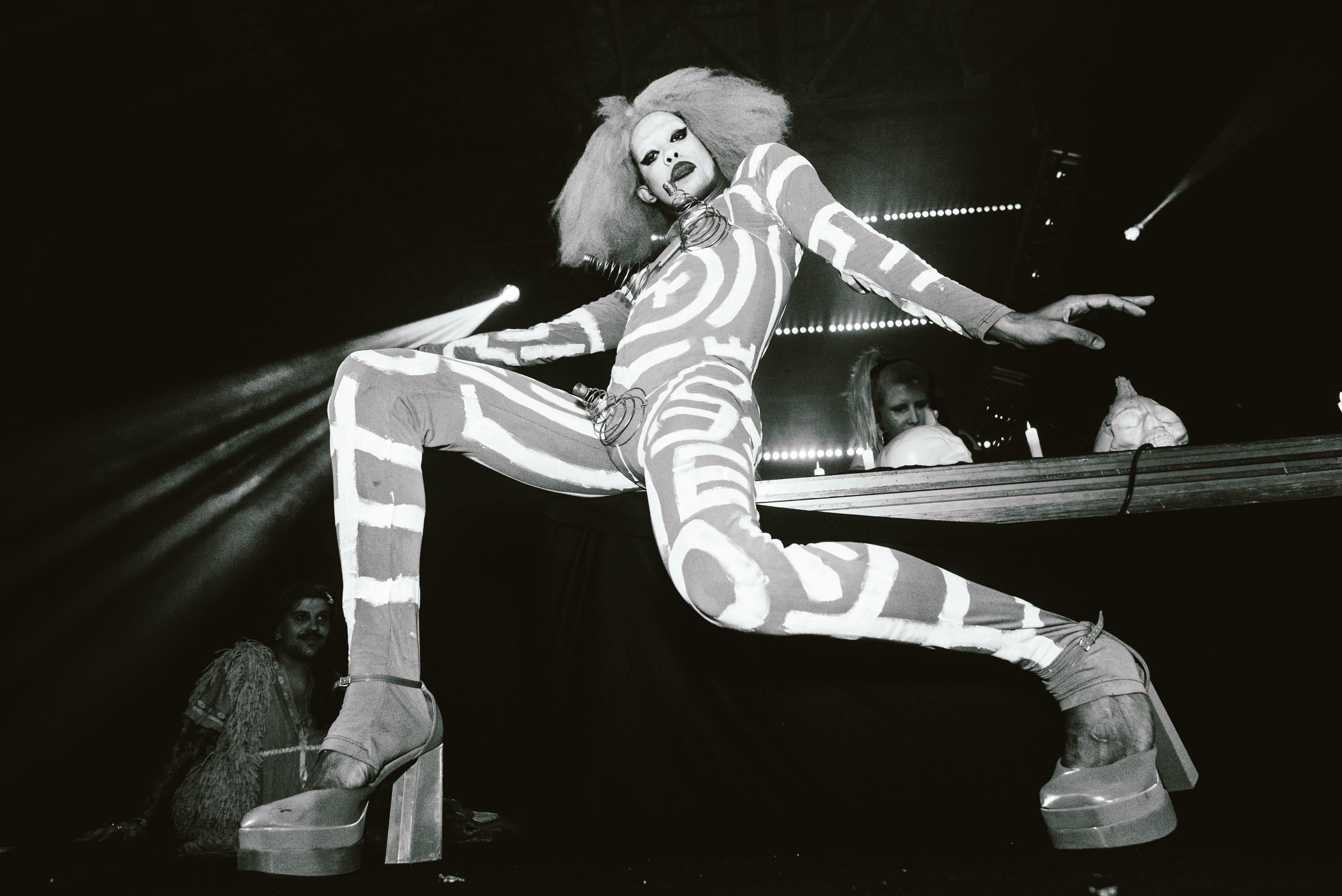























EDITORIAL
CORPO EXPANDIDO, IDENTIDADE IDEM - DESEJO E SEXO NA PELE PELÍCULA DA FOTOGRAFIA.
“Se a subversão é possível, será uma subversão a partir de dentro dos termos da lei, por meio das possibilidades que surgem quando ela se vira contra si mesma e gera metamorfoses inesperadas. O corpo culturalmente construído será então libertado, não para o seu passado natural, nem para seus prazeres originais, mas para um futuro aberto de possibilidades culturais”. Judith Butler*
Na década de 1990 surgiu no Brasil uma revista que foi uma das mais importantes do país em fotografia, a Paparazzi Photo Art. Durante seus oito anos de existência e suas 23 edições impressas (a 1a publicada em setembro de 1995, e a última, em 2003), ela foi referência no Brasil. Desde então existe virtualmente: até agora são 38 edições virtuais, com algumas impressas em pequenas tiragens, lançadas trimestralmente. Foi criada por Carlo Cirenza, um brasileiro que atua tanto na fotografia como no meio editorial e curatorial – brasileiro e internacional – desde 1974. Foi curador da Paparazzi Galeria, na Avenida Pedroso de Moraes (pertinho da Rebouças), em Pinheiros, São Paulo, de 1997 até 2006. Uma galeria literalmente na rua, que na época significou muito para a cidade, deslocando a fotografia do “cubo branco”, da galeria, para a azáfama perene de uma via pública, para a passagem que por segundos ou minutos se transfigurava em uma paisagem. Numa imagem fotográfica. Cirenza já publicou grandes fotógrafos, como Alair Gomes, Angelo Pastorello, Antonio Guerreiro, Athos Bulcão, Bubby Costa, Cassio Vasconcellos, Cesar Oiticica Filho, Claudio Feijó, Eduardo Muylaert, Grete Stern, Jacques Faing, José Oiticica Filho, Klaus Miltteldorf, Luiz Garrido, Marcelo Pallotta, Mario Cravo Neto, Miro, Otto Stupakoff, Rafic Farah e Vanessa Beecroft, entre outros grandes nomes da fotografia brasileira e internacional. Contemporâneos, nascemos na
mesma década (ele em 1960, e eu em 1969), e tive a honra, aos 29 anos, em 1998, de ser convidado por ele a ter um ensaio de oito páginas na revista número 16. Era a edição de abril/maio do ano, que trazia na capa uma foto de Arthur Omar (da sua série “Pânico Sutil”), na qual apresentei parte da série de polaroides “Confabulário do Corpo”. Mais de 25 anos depois, sou convidado por Cirenza para a curadoria da edição 39 com temática LGBTQIAPN+, com trabalhos de 13 artistas convidados para apresentar um recorte de sua produção fotográfica.
Vale contextualizar historicamente que a sigla GLS surgiu na década de 1980 para identificar o movimento de gays, lésbicas e simpatizantes. Mas foi exatamente há 30 anos, em 1994, quando a amiga, jornalista, ativista e empresária Suzy Capó usou o termo durante os preparativos do Festival Mix Brasil (que ela criou com o também amigo André Fischer) que a sigla se tornou popular. De lá para cá, o termo evoluiu no decorrer dos anos para LGBTQIA+ (representando Lésbicas, Gays, Bissexuais, Transgêneros, Queer, Intersexuais, Assexuais e outras identidades). E atualmente se desdobrou em LGBTQIAPN+, incluindo também Pansexuais e Nãobinários. Cada letra do acrônimo (siglas que podem ser lidas como uma palavra) reconhece a diversidade de sexualidades e identidades de gênero, cada uma com suas características e especificidades.
Esta edição tem a intenção de apresentar/ mostrar diferentes corpos, identidades de gênero e sexualidades. Mas, mais do que tudo, falar visualmente sobre as representações do desejo na pele que é a película fotográfica e em toda sua complexidade e política. E aqui reforço, no que diz respeito à “política”, aquilo que está relacionado à
vida em comum, aquela que foi criada para [des]regular as querelas sociais. Vale lembrar que Sócrates já dizia que um homem público é aquele que lida com a “coisa pública”. Para ele, assim como para Aristóteles e Platão, “a política e suas instituições têm uma função formativo-educativa, no sentido de que determinam a justiça ou a injustiça na sociedade”. Uma edição mais do que pertinente nos tempos nos quais [sobre]vivemos em um país que é o que mais mata pessoas trans pelo 15o ano consecutivo. E, ao seu modo, procurar também refletir sobre a construção histórica de corpos, sujeitos, sexualidade e principalmente, subjetivações que se materializaram esteticamente e politicamente em suas criações, em suas representações. Esta edição também abriga em sua maioria criadores dos Estados de São Paulo, Rio de Janeiro e um da Bahia. Espero que em outra – que atualize futuramente o mesmo tema – o recorte curatorial possa ser ampliado e se desdobre em artistes de todo o Brasil. Recentemente, pela 1a vez em sua história, o IBGE (Instituto Brasileiro de Geografia e Estatística) realizou uma pesquisa demográfica que fez um mapeamento da sexualidade dos brasileiros, embora com algumas falhas. Em seu questionário só constavam as opções “gay”, “bissexual” e “lésbica”. Em relação às regiões, o maior percentual é do Sudeste. Lembrando que os três estados brasileiros mais populosos – São Paulo, Minas Gerais e Rio de Janeiro – concentram quase 40% da população brasileira. Aqui estão trabalhos de 13 artistes brasileires: Aun Helden (SP), Bella Tozini (SP), Beto Pêgo/Betina Polaroid (RJ), Claudia Ferreira (RJ), Claudia Guimarães (SP), Edgard de Souza (SP), Fernanda Piccolo (RJ), Francisco Hurtz (SP), Iatã Canabrava (SP), Íra Barillo (RJ), José Marçal (BA), Pamela Facco (SP) e Victor Curi (RJ). E aqui, mais do que nunca, cai como uma luva a frase “uma imagem vale mais do que mil palavras”. Lembro do clássico “A Câmara Clara”, de Roland Barthes, livro no qual nos fala de dois elementos, duas palavras que para ele
são essenciais na fotografia, o studium e o punctum. O primeiro seria como um sentimento que, às vezes, proporciona emoção, mas sempre é margeado pelo “revezamento judicioso de uma cultura moral e política”. “Reconhecer o studium é fatalmente encontrar intenções do fotógrafo”; o que permite a leitura dos seus mitos, que visam evidentemente a “reconciliar a Fotografia e a sociedade”. Já o segundo, para ele, em uma fotografia, é o “que, nela, me punge (mas também me mortifica, me fere)”. Algo da ordem da manifestação, como uma flecha que nos penetra, nos transpassa. Que essas fotografias aqui apresentadas possuam mais punctum, que nos atravessem e também a qualquer julgamento moral ou político nesses corpes dissidentes, disruptivos e expandidos na pele que é a película fotográfica.
Jurandy Valença, agosto de 2024.
*Epígrafe do livro “Corpos, Gêneros e Sexualidades nas Ciências Humanas e Sociais”, organizado por Sirlene Mota Pinheiro da Silva e Jónata Ferreira de Moura, ambos professores da Universidade Federal do Maranhão.
AUN HELDEN
Aun explora o corpo e suas possibilidades – do assustador, do estranho, ao futurista. Todo o seu corpo é possibilidade para a artista: “A linguagem é um corpo, uma episteme possível de transformações e ressignificações de seus símbolos. O trauma, o grotesco, o líquen, o glamour, o fracasso são todas esculturas profanas do mundo que crio como uma linguagem que atravessa a realidade”. Artista brasileira que trabalha com múltiplas linguagens (como performance, fotografia, incorporação prostética, vídeo e som), tem participado de diversas mostras no Brasil e no exterior, sendo um nome de destaque no circuito de arte brasileira contemporânea.
BELLA TOZINI
O projeto “Corpes Dissidentes”, com curadoria de Sylvia Furegatti, é uma exposição e intervenção urbana da artista, que reúne retratos de pessoas da comunidade LGBTQIAPN+ com corpes e expressões dissidentes, em seus momentos mais privados, muitas vezes vulneráveis, ocasionalmente em espaços domésticos. A série traz a potência desses corpes, entendendo-os como interface política, cujas experiências vividas existem nas complexas intersecções de identidade de gênero, idade, raça, formas do corpo, sexualidade e situação socioeconômica. Bella é graduada em Comunicação Social/ Cinema pela FAAP, possui uma Especialização pela Escola de Cinema de Lódz, na Polônia, e é Mestra em Artes Visuais pela Unicamp.
BETINA POLAROID
Betina Polaroid é uma artista visual conhecida por mesclar a arte drag e a fotografia em uma performance única. Por meio de sua fotografia híbrida analógico-digital, fotomontagens, vídeos e performances, ela começou sua jornada como artista queer em 2014, quando o fotógrafo comercial Beto Pêgo se encantou pela nova geração de drag queens e drag kings que se apresentavam em festas LGBTQIAPN+ no Rio de Janeiro. Beto estudou Publicidade na Universidade Federal do Rio de Janeiro, quando teve seu primeiro contato com a fotografia na Escola de Artes Visuais do Parque Lage. Trabalha com fotografia documental, editorial e de publicidade.
CLAUDIA FERREIRA
A Marcha pela Cidadania é considerada a primeira Parada LGBTQIAPN+ do Brasil, e ocorreu no final da 17ª
Conferência da Associação Internacional de Gays e Lésbicas (ILGA), no Rio de Janeiro, em 25 de junho de 1995. Claudia fez a cobertura dessa e de outras paradas no RJ, e reúne todas elas em registros no site Memória dos Movimentos Sociais, onde também estão fotos documentais de movimentos feministas captadas desde o final da década de 1980. A fotógrafa trabalhou no Jornal do Brasil, na Folha de S.Paulo, no Correio Braziliense e nas agências Sipa Press e Cone Sur Press.
CLAUDIA GUIMARÃES
As fotos de Claudia Guimarães são um retrato do que muitos querem que permaneça anônimo, quebrando tabus e empoderando/fortalecendo todes aqueles que são registrados sob seu olhar. Cada uma das fotos ajuda a eliminar preconceitos e a normalizar corpos e expressões de gênero. “Tento resgatar memórias através da fotografia.” Claudia começou a alcançar o grande público quando teve seu trabalho publicado durante a década de 1990 na Folha de S.Paulo, tornando-se desde então um dos nomes que são referência na fotografia brasileira. Também atua na área de moda e de publicidade.
EDGARD DE SOUZA
As fotografias de Edgard brincam com a transmutação de corpos e com a ideia tradicional de retratos, como já é comum em seus trabalhos com figuras humanas, que abordam questões ligadas ao corpo. O artista, representado pela galeria Vermelho, tem livros publicados e é um dos mais importantes da arte contemporânea brasileira, com obras em diversas instituições no Brasil. Ele estudou artes plásticas na Fundação Armando Álvares Penteado (FAAP) e trabalha com pintura, gravura, fotografia e escultura, linguagem na qual objetos do cotidiano – principalmente o corpo – se transfiguram em representações com novos sentidos e significados. Familiares, estranhas e sedutoras.
FERNANDA PICCOLO - DOCUMENTADAS
O projeto pioneiro “Documentadas” é o primeiro banco de registros do Brasil sobre o amor entre mulheres. Suas histórias são acolhidas pela escuta e pela fotografia. Idealizado por Fernanda, surgiu em 2021, durante a pandemia de Covid-19, por meio de diversos estudos e da percepção de que as mulheres são pouco registradas em toda a sua história, principalmente as que se relacionam afetivamente com outras mulheres. Uma plataforma que também gera empregos, renda, conexões e apoio psicológico para a população LGBTQIAPN+. Ela é formada em Fotografia e Comunicação Visual pela Universidade Luterana do Brasil.
FRANCISCO HURTZ
Na série “Retratos Fragmentados”, Francisco Hurtz busca estudar as formas anatômicas e sociais do homem.
“Durante séculos, a estrutura que define os gêneros impôs às mulheres uma existência privada, devotada à família numa espécie de aprisionamento doméstico. Coube ao homem o papel de agente do Estado. O Homem – figura pública por imposição – é responsável pela manutenção de poderes através da política, capitalismo e patriarcado.” Ele participa de exposições individuais e coletivas no país e no mundo, e seu trabalho faz parte do acervo de arte da Fisher Library (biblioteca de livros raros da Universidade de Toronto, Canadá), entre outras instituições.
